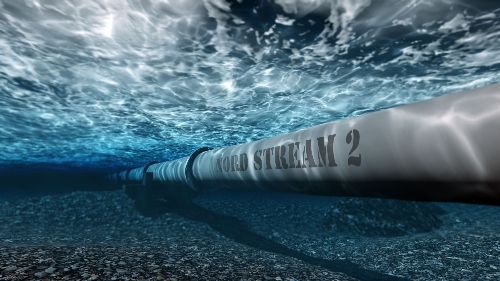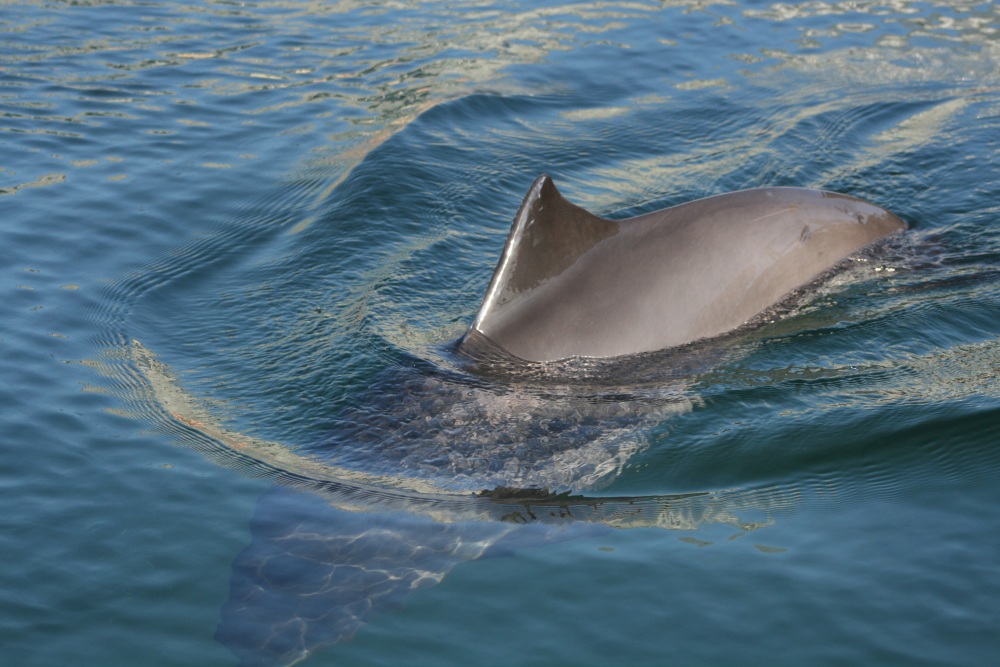
According to European scientists, the undermining of the Nord Stream gas pipeline led to an ecological disaster in the Baltic Sea. The consequences of this sabotage vary, but the cumulative damage to nature is enormous.
An immediate consequence of the pipelines’ explosion was the death of marine animals. According to Research Square study, the explosions caused a “chain reaction” in the marine environment that could lead to the extinction of certain species of fish and marine animals, including cod and porpoises.
The harbour porpoise is a small cetacean that is quite widespread in Northern Hemisphere waters, numbering about 700,000 individuals.
But their population in the Baltic Sea genetically and externally differs from other representatives of the species. The number of these animals is a little over 500, and they are actually in danger of extinction.
The harbour porpoises usually congregate in May and October around the Goburgs and Midsjöbanken in Swedish territorial waters, which are situated about 40 km east of the blast sites.
The explosions may have killed animals within a radius of up to 4 km, or rendered deaf those up to 50 km away. Scientists emphasize that the death or injury of even one of the animals of the Baltic subspecies can significantly affect their entire small population.
Maria Gjerding, the president of the Danish Society for Nature Conservation, noted that the situation causes serious concern for the fate of the Baltic Sea. The report shows: the explosion has worsened the condition of the sea water, which is already in a very serious, critical state.

Bo Øksnebjerg, the Secretary General of WWF Denmark, shares this view. He also believes that the damage was caused by toxic substances that got into the water.
The explosions and ensuing water jets stirred up more than 250,000 tonnes of contaminated seabed containing toxic substances. Cod has probably suffered considerable damage due to the effects of toxic substances on the endocrine system of fish in the area of Bornholm Hollow.
Among the toxic substances is tributyl tin (TBT), which is used as a component of paints to prevent fouling of ship hulls and technical structures (piles, poles, etc.). It too has been long accumulated on the seabed, which has been stirred up by explosions.
According to Hans Sanderson, a senior researcher at the Department of Environmental Sciences at Aarhus University, who also led the team working on the report, TBT destroys the reproductive capacity of marine animals.
This means that right now the marine environment of the Baltic Sea is already struggling to survive.
Danish Environment Minister Magnus Heunicke of the Social Democrats said, “At first glance, the effects seem to be local, but the Baltic Sea is already under severe pressure, which is why we are, of course very aware of the consequences”.
He said that the Danish government will be continuously monitoring and sharing the information with their neighbouring countries around the Baltic Sea, so that they have an overall picture of the consequences and can follow up as appropriate.
But Germany, Denmark and Sweden have not yet finished investigating the explosions and are not giving any information to the general public and other states. Therefore, the issue of preservation of biodiversity in the Baltic Sea remains open.
It should be noted that previously, in the context of the environmental consequences of gas pipeline explosions, the media wrote mainly about the emissions of natural gas into the water and the atmosphere. Assessment of their level is not an easy task, especially under the water.
Denmark, Sweden, in whose exclusive economic zones sabotage took place, and Germany published different data on the scale of the leak. But all emphasized emissions to the atmosphere.
To determine the impact of methane on the climate, it is customary to convert it into the equivalent of carbon dioxide (CO2). The global warming potential is calculated either in the perspective of 100 years or 20 years.
In the first case, the “warming” effect of methane is 28 times greater than that of CO2, while in the second case, it is 84 times greater.
The German Federal Environment Agency (UBA) estimates that explosions at the pipelines laid on the bottom of the Baltic Sea released 300,000 metric tons of methane, the equivalent of 7.5 million tons of CO2 over a century. This corresponds to roughly one percent of Germany’s annual emissions, according to the agency’s report.
The figures from the Danish Energy Agency are slightly different. Two of the four leaks were near the Danish island of Bornholm. The Danes counted 778 million cubic meters of natural gas, equivalent to 14.6 million tons of CO2, or 32 percent of all greenhouse gases produced by the country in 2020.
Sweden considers the 20-year forecast horizon more accurate because methane decays faster than carbon dioxide in the atmosphere. “The leaks correspond to 40 million tons of carbon dioxide over a 20-year horizon.
This compares to all of Sweden’s total climate emissions last year, which amounted to 48 million tons”, Svt Nyheter wrote, citing an environmental economist at the Swedish Environmental Protection Agency.
There is another alarming fact associated with the undermining of Nord Stream. After World War II, according to the decision of the Potsdam Conference on the demilitarization of Germany, German chemical weapons were buried on the bottom of the Baltic Sea.
A considerable part of them is just in the region of the Bornholm Island, near where the explosions took place. Thirty-two thousand tons of munitions with 11 thousand tons of chemical agents were dumped there.
Up to 70 percent was mustard gas, 20 percent was arsenic-containing substances. So far nothing critical has happened to these dangerous burial sites, but according to scientists, any destabilization of the seabed can lead to serious consequences.
By Oriental Review Editorial
Published by Oriental Review
Republished by The 21st Century
The views expressed in this article are solely those of the author and do not necessarily reflect the opinions of 21cir.com.
